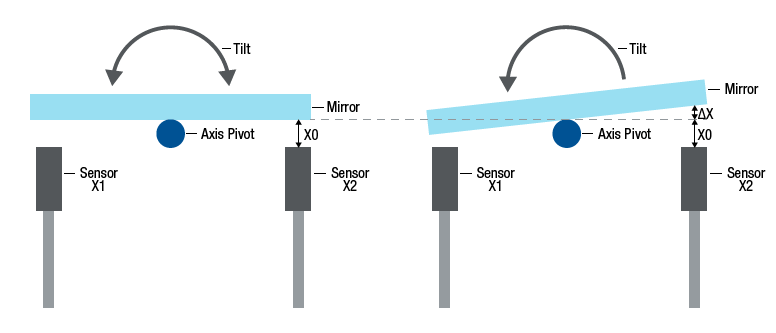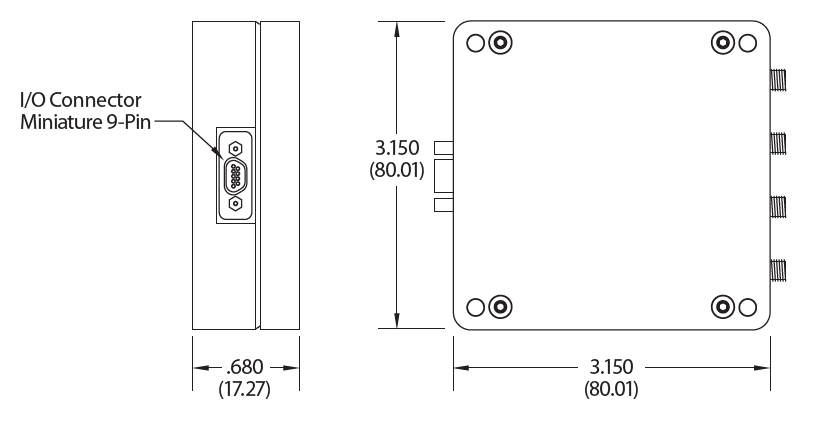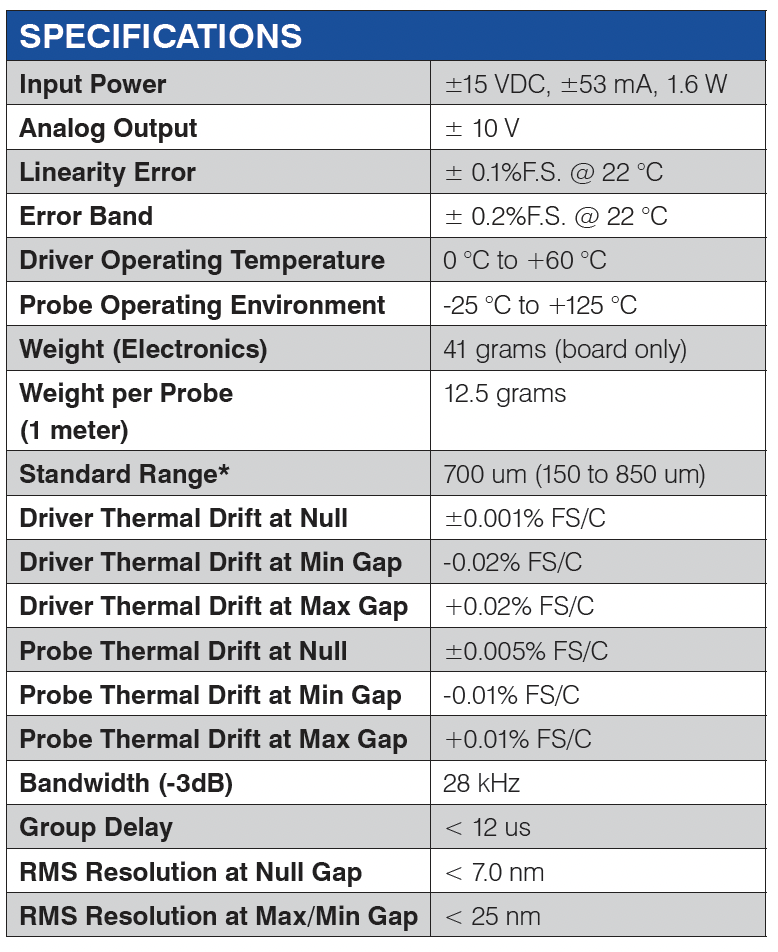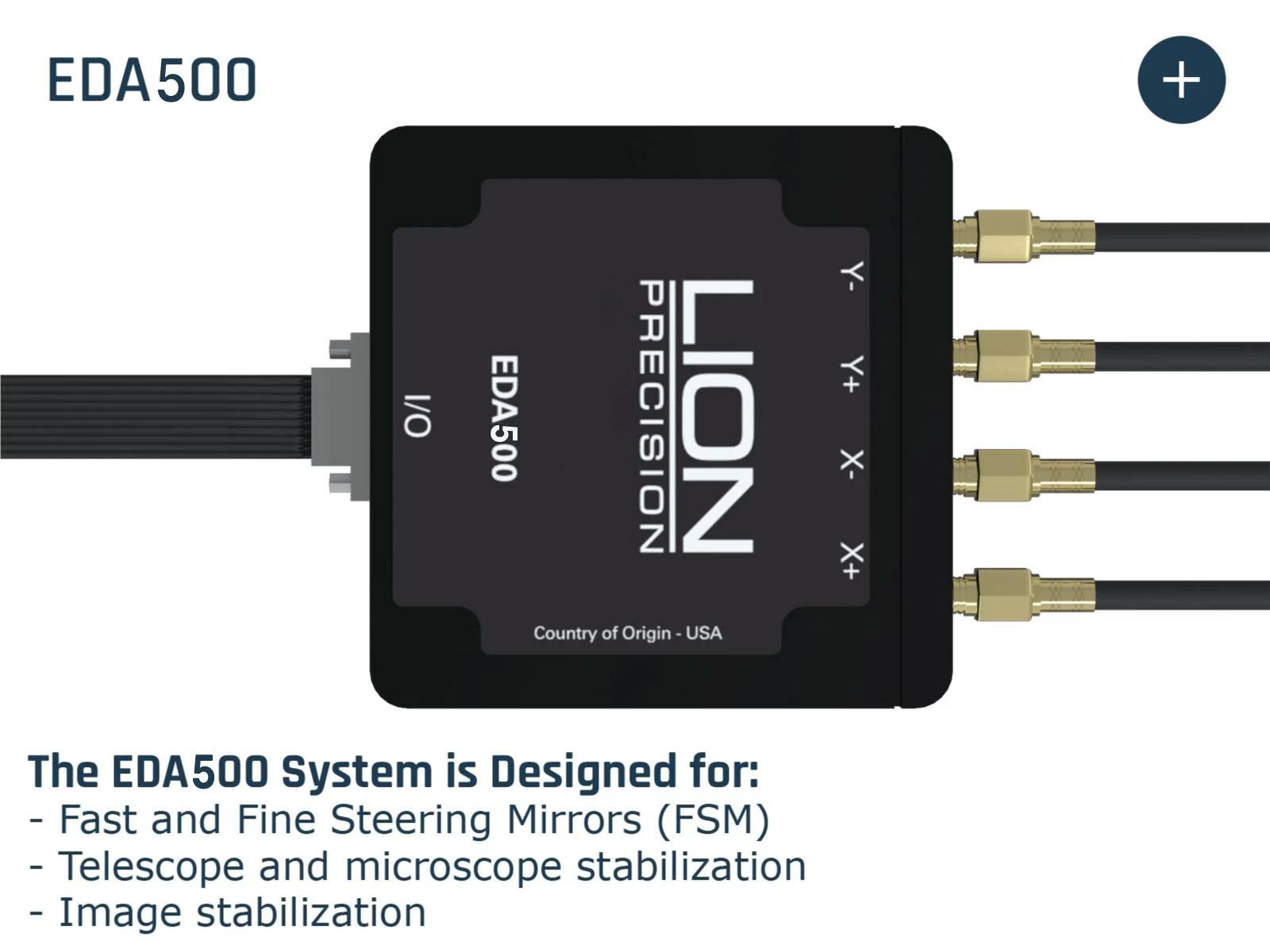EDA500
The New Sensor-Driver System for Fast and Fine Steering Mirror (FSM) Applications and Differential Sensing
Featuring state-of-the-art Lion Precision Eddy Current Sensors, the new EDA500 controller is the ideal off-the-shelf solution for Fast Steering Mirror and differential sensing applications.
The EDA500 system comes with two matched pairs of high-resolution noncontact Eddy Current Sensors, the driver with four sensor inputs (two per axis), an analog output, and a nine-pin connector interface for easy connectivity.
Complete the form below to inquire about EDA500 for your next project.
Designed for:
- Fast Steering Mirrors (FSM)
- Telescope & microscope stabilization
- Image stabilization
How it Works:
The differential system provides feedback from any change in the null position. Small changes in the tilt of the target are measured and sent to the actuator to allow fast and accurate control and positioning.

Features:
- High bandwidth
- High resolution
- Low power consumption
- Excellent temperature stability
- Matched sensors for high stability and repeatability
- Radiation tested to 75 krad TID
The system can be customized for specific applications and is also available as a board without an enclosure for space savings and easy integration into a control system.

Specifications

Application Content
How do FSMs Work?
Fast Steering Mirrors are physical systems that track and control laser beams used in telecommunications. An incoming beam is redirected by the mirror to another target. The mirror is mounted on a flexure with the capability to move it in both the X and Y directions. Two pairs of sensors, one on the X-axis and one on the Y-axis, give the mirror control system the exact position of the mirror. This allows the system to make fast continuous adjustments to keep the beam pointed exactly at the intended target. Read More
FSMs in the Aerospace Industry
Satellites orbiting Earth have mirrors that relay incoming signals from ground stations or other satellites to another receiving station. Since the satellites —and thus the mirrors— are continuously moving, the signal beam needs to be continuously “steered” toward the intended target. To do this, the mirror is constantly and rapidly adjusted to keep the reflected beam redirected properly. Read More
Contact Us
"*" indicates required fields


